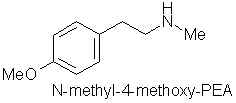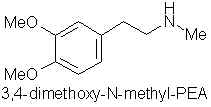|
Ariocarpus Retusus
Contains:
  
____________________________________________________________________________
Description
Plant grey, or blue-green, rising slightly
above ground level, globose, rounded on top, 3-12cm high, 10-25cm in diam.;
tubercles divergent, erect, crowded and basally compressed, usually becoming
attenuate at the apices, convex or nearly flattened adaxially and often with
shallow adaxial undulations or
wrinkling, not fissured, 1.5-4cm long, 1-3.5cm broad, nearly as broad as long;
spine-bearing portions of the areoles at the tips of the tubercles, rounded,
1-5mm in diam.; flowers 4-5cm in diam., 2-4 2cm long; outer perianth parts
white, occasionally with reddish midribs, 1.2-2cm long, 5-8mm broad; inner
perianth parts white or rarely magenta, 1.4-2cm long, 5-9mm broad; pistil not
exerted above the stamens; style 1.4-2.1cm long; stigmas 7-16, 2.5-9mm long;
fruit white, green, or rarely pinkish, 1025mm long, 3-10mm in diam.
Distribution
(Map)
Ariocarpus retusus, is along with Ariocarpus kotschoubeyaanus, one
of the most widely distributed species in the genus, It ranges from north of
Saltillo, Coahuila southwards to San Luis Potosi, SLP, the easterly limits of
the species occur in Tamaulipas, populations are also found in Zacatecas and
Nuevo Leon. A retusus ssp. retusus is a plant of the high Chihuahuan
desert occurring at altitudes of between 1300 and 2000 metres, on calcareous
hillsides and occasionally gypsum plains. At lower altitudes (200 - 800m) of the
Sierra Madre Oriental it is replaced by A. retusus ssp. trigonus.
Comments
This species, the type of the genus is, as
might be expected with such a wide distribution range is highly polymorphic.
Tubercle size and shape vary widely, a terminal areole may or may not be
present, flower color ranges from white to pink, or even bicolored (see
The Aramberri Enigma).
The range of variation has been further increased by the reduction of A.
trigonus to sub-specific rank under A. retusus by Anderson. The vast
amount of phenotypic variation in the species has led to the erection of several
variants, A. furfuraceus, has been applied to plants with equilaterally
triangular shaped tubercles, A furfuraceus var. rostratus refers to
plants with a more tapered apex to the tubercle.
The most recently described variants are
A. confusus, discussed here separately
(The Aramberri Enigma),
and A. retusus var. scapharostroides both published by Halda & Horacek
in 1998. A. retusus var. scapharostroides is based on plants from
the Villa Juarez region of SLP, it is characterized by erect angular tubercles,
superficially reminiscent of A. scaphirostris, this variety awaits
further evaluation but would appear to represent just another variant of the
A. retusus complex. Seed of this plant is available under the field number
PP232, the plant offered by Mesa Garden as A. retusus form A also equates
to A. retusus var. scapharostroides. Other recently published
names associated with this species are A. retusus subsp. jarmilae, A.
retusus subsp. horaceki, and A. retusus subsp. panarottoi. A
retusus var mnimus is a nomina nuda which has recently been applied to
plants from Echido Nuncio,in San Luis Potosi.
Ariocarpus
retusus is of easy culture in a well drained calcareous clay compost, with
ample water during the growing season. It is probably the easiest species of the
genus to raise from seed, but will generally take about 10 years to reach
flowering size under United Kingdom conditions.
Original Publication
Ariocarpus retusus Scheidweiler, (1838)
Bull. Acad. Sci. Brux. 5:
492
____________________________________________________________________________
| Recommended Temperature Zone: |
USDA: 9b-11
|
| Frost Protection: |
Hardy to 27°F (-3°C) |
| Sun Exposure: |
Light shade to full sun |
| Origin: |
Mexico (San Luis Potosi, Coahuila, Nuevo Leon) |
| Growth Habits: |
Solitary, very slow growing up to 10 inches in
diameter (25 cm) |
| Watering Needs: |
Little water, needs excellent drainage |
| Propagation: |
Seeds, occasionally grafted |
http://www.desert-tropicals.com/Plants/Cactaceae/Ariocarpus_retusus.html
____________________________________________________________________________
Ariocarpus Retusus is probably the quickest and easiest to
grow of the species in the Genera Ariocarpus. Over the twenty years or so I have
nurtured this plant, and ones like it, I have changed my views as to how
difficult it is to grow. It is very easy. Give it a large clay pot, at least 4
cm between the edge of the pot and the plant, reasonably gritty compost, plenty
of water in the British summer, and less during the Autumn and Spring, and it
will reward you with good growth and flowers. It does not like to be totally
bone dry (Retards growth), in fact on warm winter days I will often give it a
little water to make sure the roots do not completely dry out. The clay pot will
ensure that the plant has some relatively dry spells which is important in a
damp climate like the UK's. Using clay pots also allows one to use a much richer
compost than would be the case if plastic pots were used.
http://ourworld.compuserve.com/homepages/davidtraish/Ariocarpus_Retusus.htm
____________________________________________________________________________
Photos:
http://www.viridis.net/cactus/mexico/img2027-76-77.html
http://space.tin.it/scienza/faccadia/foto/fartetv.jpg
Where you can order:
http://plant-planet.net/ariocarpus_retusus.htm
http://www.theamateursdigest.com/rarepl04.htm
|



